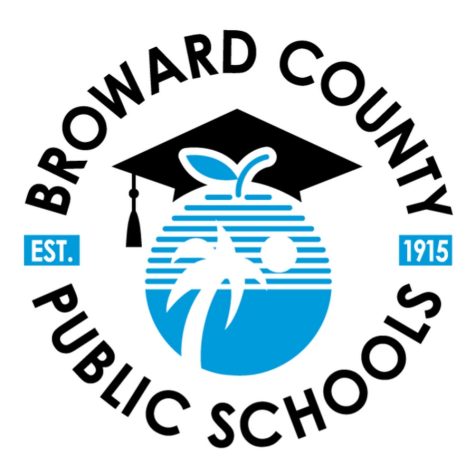Slew of higher-level classes allow students new opportunities
Programs, such as AP, Cambridge and Dual Enrollment all offer different benefits to student.
Social studies teacher Karl Linhart holds a class discussion with his AP United States Government students.
In the rapidly changing world of high school, new programs and choices are constantly being thrown in the way of students. These choices range from minuscule details, such as, what electives to take, to more life-altering ones, such as what colleges to apply for. When it comes to AP, Dual Enrollment and Cambridge courses, students become confused on which to take–and often times, what the classes even offer.
AP classes such as Psychology, World History and English Language offer a slew of benefits. With these intense classes, comes a weighted GPA on a 6.0 scale and potential college credits.
“In terms of workload, AP expects more of you with reading and homework,” AP Psychology teacher Javier Montoya said. “The big thing that is difficult to articulate is the critical thinking component and being able to synthesize and manipulate the information.”
Students take a final exam at the end of the year, which determines whether or not the college credit is earned. The classes are directed by College Board, who sets requirements for the curriculum and passing the exams.
Sophomore Jose Luis Herrera said AP classes differ from regular and honors classes in that they “…go more in depth and cover more topics.”
Herrera recognizes the difficulty of AP classes but he values the benefits enough to take a chance.
“[I]t isn’t easy to achieve high grades, but I feel it is worth the time and risk,” Herrera said.“They definitely are a challenge, the workload is sometimes overwhelming, but I know they will help me achieve my goals.”
Students also have the option to earn the AP Capstone diploma. The requirements for the AP diploma include passing the AP seminar and research exam along with an additional four AP exams of the student’s choice.
Similarly, dual enrollment classes include the weighted 6.0 GPA and college credits. However, the classes themselves are administered by Broward College and FIU. Along with this, students can opt to take courses on the actual college campuses, high school campus or online. As a part-time college student, they are granted an opportunity to experience more freedom than a typical high schooler and see how college classes really work.
“Broward College is available through all grade levels as long as they have the requirements,” guidance director Lauren Cohen said.
The requirements include a 3.0 GPA and the minimum test scores, which are set by the state.
Both Broward college courses and FIU courses are offered on Western High School’s campus, but the FIU courses are only an option for juniors and seniors. Additionally, there are still Broward courses offered on the Broward College Central Campus.
Junior Jacob Constantine says that the difficulty of these courses is somewhere “between honors and AP.”
Constantine adds that the classes are taught in the same style as normal high school level classes but are more rewarding because of the GPA boost which helps his class ranking. The main reason he took dual enrollment classes was to earn college credits.
Cambridge differs from the other two, in that it offers a Cambridge diploma and Bright Futures scholarship to students who complete seven Cambridge classes within three years, the courses also offer a 6.0 GPA. Cambridge University in England organizes the content and essential elements for each course. While classes such as global perspectives have a project accounting for a percentage of the final exam, most classes include a typical test as the final exam.
“Rather than give students a bunch of content to memorize, Cambridge asks [one] to apply the skills that [they’ve] learn. Most of the tests are not multiple choice; they ask students to respond in writing. It is not black and white; there is more room for students to show everything that they know,” said Annette Goldstein, thinking skills teacher and next year’s Cambridge coordinator.
Students agree that the way the content is presented is different from typical classes.
“The teaching style is certainly different; we are taught how to, instead of what, so we can learn independently and use intuition to do things,” sophomore Miguel Ramos, who has taken both AP and Cambridge classes, said.
Students who pass seven Cambridge exams, as well as obtain 100 service hours receive a full Bright Futures scholarship. Adrianna Ibarra, the Cambridge testing coordinator, and Goldstein concur that this is the main benefit of taking the courses.
“It does not matter what they score on the SAT or ACT; most of our students are very bright and would do well on the SAT or ACT anyways. However, if they are a person who does not test well, this would be a sure way of knowing they get their Bright Futures,” Ibarra said.
Goldstein added that even students who are not going for the diploma can benefit from these classes by earning college credits.
She added that even students who aren’t going for the diploma can benefit from these classes by earning college credits.
Ramos said he took Cambridge because he wanted to experience this new style of teaching.
He explains that it is not too difficult for him to balance both AP and Cambridge, although it is a bit confusing to switch between teaching styles.
The overarching theme of these high level classes are their academic benefits and college level prestige. Although dual enrollment is statewide, AP is nationwide and Cambridge is worldwide, students gain opportunities to excel and master classes that prepare them not only for college, but for life.









